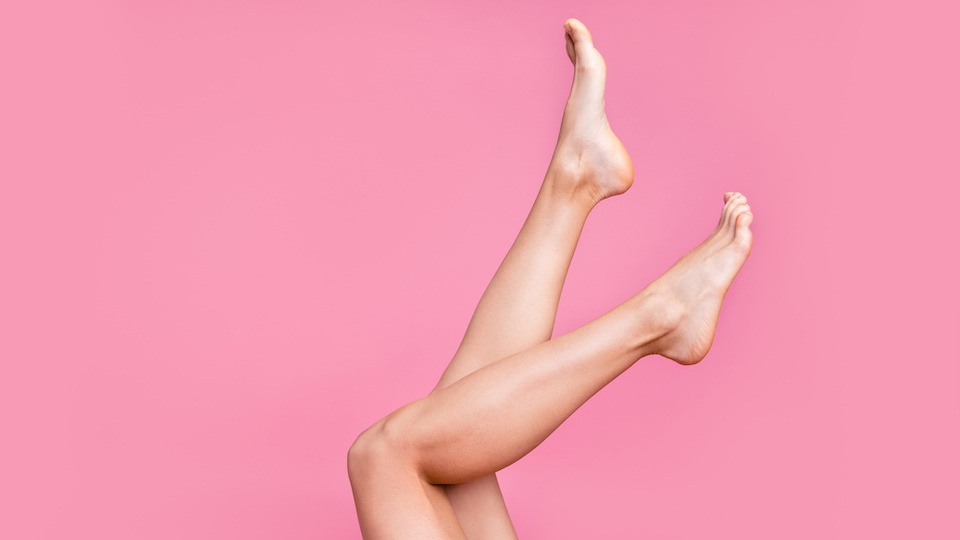Do you get impressions in your legs when you take off your socks? If that happens to you on a regular basis, you are probably “retaining water” which is an extremely common condition that is formally known as edema. There are several types of edema and even more underlying reasons why it occurs… but is most cases, there is one simple treatment that works like a charm. After a long day, almost everyone does it almost instinctively…elevating the legs. When the legs and feet are positioned so that they are higher than the heart, gravity works to your advantage to allow the blood and lymphatic channels to empty more effectively. My advice is to sit back, put your feet up, and read this article by my team at UpWellness.
-JL
Though they support you, propel you through work tasks, and carry you through your day, your legs likely don’t get enough care and attention. Incorporate daily leg elevation in your self-care routine to give your legs the love they deserve. Here are just a few reasons we love elevating our legs and how to do it right.
Why should you elevate your legs
- Decrease swelling
- Help relieve mild to moderate varicose veins
- Removes pressure and fluid build-up from your legs
- Speeds up muscle recovery following exercise
- Prevents leg swelling following travel
- Can help prevent blood clots and deep vein thrombosis (DVT)
Elevate legs for 15-20 minutes
Many people become impatient when elevating their legs and can only stand to sit still for a few minutes at a time. Anything less than 15 minutes, however, will not provide the same benefits and is fairly pointless. Aim to elevate your legs for 15-20 minutes each day. Set a time to help keep track and use this downtime to read a book, meditate, call a friend, or merely focus on your breathing.
Elevate at the proper angle
Simply tossing your legs over the side of the couch isn’t going to do much for your circulation. In order to receive all the benefits from elevating your legs, you have to raise them at least above your heart at the proper angle to avoid straining muscles or cutting off blood flow. Your thighs should be at less than a 45-degree angle, while your knees should be bent between 20 and 30 degrees, with your calves at 15-20 degrees. This is the ideal position to encourage drainage and utilize gravity to get rid of blood and fluid build-up. Use a collection of pillows to achieve the proper angle, or invest in a leg elevation pillow.
Make sure your upper body is inline
Just because you are elevating your legs, doesn’t mean you can neglect your upper body. Make sure that your neck is in line with your spine and that your back is completely straight. Use your tail bone to help ground you and give you a reference point as you get comfortable. It is also important to lie down on a comfortable surface that will allow you to easily stretch out your entire body. You don’t want to be cramped or confined to a small area.
Looking after your legs
If you have varicose veins or experience frequent leg pain, elevation can bring some relief. However, it is not a substitution for healthy habits that look after your lower body. Do these things to ensure that your extremities are given the care they deserve.
- Stop wearing high heels. If you can’t fathom having to ditch your high heels, simply save them for special occasions. Always wear compression stockings when you do wear heels and practice calf raises to strengthen your leg muscles.
- Exercise and eat a healthy diet. Diet and exercise affect more than just your waistline. A healthy lifestyle will radically change your entire body, while a damaging, sedentary one will compromise healthy circulation. Incorporate gentle, whole-body stretching along with leg elevation.
- Alternate between sitting and standing. It is not healthy to sit or stand all day. Either one encourages blood to pool in the feet and can cause swelling and fluid buildup. Spend at least five minutes walking every hour to counteract the effects of sitting or standing and get your blood pumping.
- Ditch tight-fitting clothes. Those calf-compression skinny jeans aren’t doing any favors for your leg circulation. Stick to loose-fitting or stretchy clothes that support natural movement and blood flow.
- Stop smoking. Aside from the hundreds of other negative effects of smoking on your body, it also impedes circulation and raises your chances of developing a blood clot.
Health note: Anyone with Congestive Heart Failure should avoid leg elevation as they may experience shortness of breath while lying flat. You should also avoid elevating your legs if you have Peripheral Arterial Disease, which can lead to pain in the feet and other complications.
-The Backyard Garden Team







